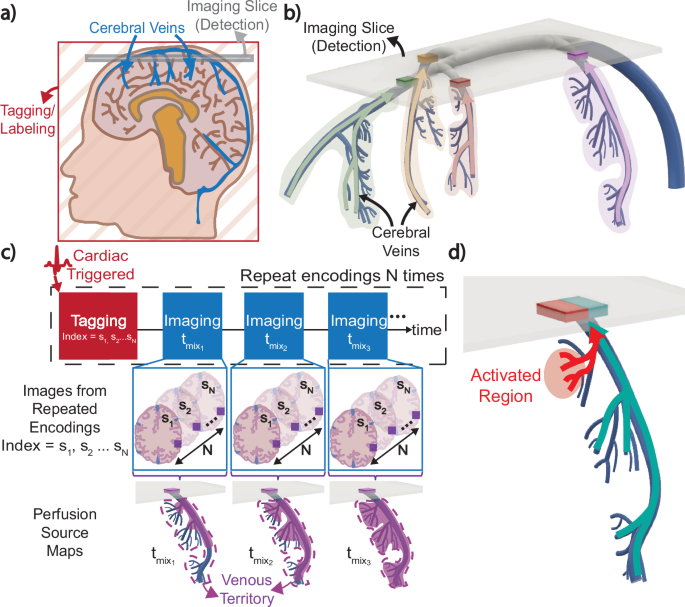2025-05-29 カリフォルニア大学バークレー校(UCB)
<関連情報>
- https://engineering.berkeley.edu/news/2025/05/new-mri-method-offers-deeper-insight-into-brain-physiology/
- https://www.nature.com/articles/s41467-025-59108-3
MR灌流源マッピングにより静脈領域が描出され、神経活性化時の灌流調節が明らかになる MR perfusion source mapping depicts venous territories and reveals perfusion modulation during neural activation
Ekin Karasan,Jingjia Chen,Julian Maravilla,Zhiyong Zhang,Chunlei Liu & Michael Lustig
Nature Communications Published:24 April 2025
DOI:https://doi.org/10.1038/s41467-025-59108-3

Abstract
The cerebral venous system plays a crucial role in neurological and vascular conditions, yet its hemodynamics remain underexplored due to its complexity and variability across individuals. To address this, we develop a venous perfusion source mapping method using Displacement Spectrum MRI, a non-contrast technique that leverages blood water as an endogenous tracer. Our technique encodes spatial information into the magnetization of blood water spins during tagging and detects it once the tagged blood reaches the brain’s surface, where the signal-to-noise ratio is 3–4 times higher. We resolve the sources of blood entering the imaging slice across short (10 ms) to long (3 s) evolution times, effectively capturing perfusion sources in reverse. This approach enables the measurement of slow venous blood flow, including potential contributions from capillary beds and surrounding tissue. We demonstrate perfusion source mapping in the superior cerebral veins, verify its sensitivity to global perfusion modulation induced by caffeine, and establish its specificity by showing repeatable local perfusion modulation during neural activation. From all blood within the imaging slice, our method localizes the portion originating from an activated region upstream.



